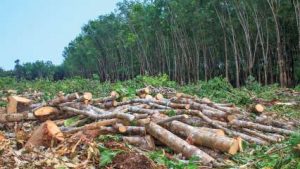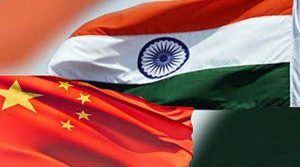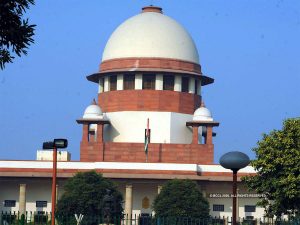Today Current Affairs: 17th January 2022 for UPSC IAS exams, State PSC exams, SSC CGL, State SSC, RRB, Railways, Banking Exam & IBPS, etc
Table of Contents
Meteorite (ALH) 84001:

A new study published in the journal Science, offers an explanation for the existence of organic compounds on the surface of Meteorite called (ALH) 84001.
- It landed on Earth from Mars in 1984, and can possibly unravel the existence of life on Mars (Red Planet).
- Meteorite named Alan Hills (ALH) 84001 was found in December, 1984 in the Far Western Icefield of Allan Hills in Antarctica by a US meteorite hunting expedition.
- At the time of its discovery it was recognised as the most unusual rock collected.
- It was described at the time of discovery as, shaped like a rounded brick or a large potato, about 6 inches long by 4 inches by 3 inches, and was partly covered with black glass.
- In 2021, NASA’s Perseverance rover collected the first sample of Martian rock.
- It can be said with certainty that the meteorite did come from the Red planet because of the presence of traces of certain gases that are just like the Martian atmosphere.
- The study posits that the organic compounds found in the meteorite were a result of the interactions between water and rocks that occurred on Mars.
- These interactions were similar to those that happen on Earth.
- These kinds of non-biological, geological reactions are responsible for a pool of organic carbon compounds from which life could have evolved and presents a basis that must be taken into consideration when searching for evidence of past life on Mars.
- The search for life on Mars is not just an attempt to answer the question ‘are we alone, but also It relates to early Earth environments and addresses the question of ‘where did we come from.
Harvest Festivals:

The PM has greeted people across the nation on the occasion of harvest festivals Makar Sankranti, Uttarayan, Bhogi, Magh Bihu and Pongal.
- The festivals celebrate the hard work and enterprise of millions of farmers across the country.
Makar Sankranti:
- Makar Sankranti denotes the entry of the sun into the zodiac sign of Makara (Capricorn) as it travels on its celestial path.
- The day marks the onset of summer and the six months auspicious period for Hindus known as Uttarayan – the northward movement of the sun.
- As a part of the official celebration of ‘Uttarayan’, the Gujarat government has been hosting the International Kite Festival since 1989.
- The festivities associated with the day is known by different names in different parts of the country:
- Lohri by north Indian Hindus and Sikhs,
- Sukarat in central India,
- Bhogali Bihu by Assamese Hindus, and
- Pongal by Tamil and other South Indian Hindus.
Bihu:
- It is celebrated when the annual harvest takes place in Assam. People celebrate Rongali/Magh Bihu to mark the beginning of the Assamese new year.
- It is believed that the festival started from the time when people of the valley started tilling the land. Bihu is believed to be as old as river Brahmaputra.
Pongal:
- The word Pongal means ‘overflow’ or ‘boiling over’.
- Also known as Thai Pongal, the four-day occasion is observed in the month of Thai, when crops such as rice are harvested and people show their gratitude to the almighty and the generosity of the land.
- Tamilians celebrate the occasion by making traditional designs known as kolams in their homes with rice powder.
Indian Army Day:

Army Day is celebrated every year on 15th January in India to commemorate the jawans and the Indian Army.
- This year India is celebrating its 74th Army Day.
- On 15th January 1949, Field Marshal Kodandera M. Cariappa, who was then a Lieutenant General, took over as the first Indian Commander-in-Chief of the Indian Army from General Sir Francis Butcher, the last British person to hold that post.
- K. M. Cariappa adopted the slogan ‘Jai Hind’ which means ‘Victory of India’. He is also one of only two Indian Army officers to hold the Five-star rank of Field Marshal, the other being Field Marshal Sam Manekshaw.
- Army Day is celebrated every year to honor the soldiers of the country, who have set the greatest example of selfless service and brotherhood and more than anything the love for the country.
- In the celebration of Army Day, the parade is organised every year at the Cariappa Parade Ground of Delhi Cantonment.
- The Indian army originated from the forces of the East India Company, which later became the ‘British Indian Army’, and eventually, after Independence, the Indian Army.
- The Indian Army was founded almost 126 years ago by the British on 1st April, 1895.
- India’s army is considered the world’s fourth strongest army.
India State Of Forest Report-2021:

The Union Ministry of Environment, Forests and Climate Change (MoEFCC) released the India State of Forest Report-2021.
- In October, 2021 an amendment was proposed by MoEFCC to the Forest (Conservation) Act, 1980 to bring significant changes to forest governance in India.
- It is an assessment of India’s forest and tree cover, published every two years by the Forest Survey of India.
- The first survey was published in 1987, and ISFR 2021 is the 17th.
- India is one of the few countries in the world that brings out such a survey every two years, and this is widely considered comprehensive and robust.
- The ISFR is used in planning and formulation of policies in forest management as well as forestry and agroforestry sectors.
- Three categories of forests are surveyed – very dense forests (canopy density over 70%), moderately dense forests (40-70%) and open forests (10-40%).
- Scrubs (canopy density less than 10%) are also surveyed but not categorised as forests.
New Features of ISFR 2021:
- It has for the first time assessed forest cover in tiger reserves, tiger corridors and the Gir forest which houses the Asiatic lion.
- The forest cover in tiger corridors has increased by 37.15 sq km (0.32%) between 2011-2021, but decreased by 22.6 sq km (0.04%) in tiger reserves.
- Forest cover has increased in 20 tiger reserves in these 10 years, and decreased in 32.
- Buxa (West Bengal), Anamalai (Tamil Nadu) and Indravati reserves (Chhattisgarh) have shown an increase in forest cover while the highest losses have been found in Kawal (Telangana), Bhadra (Karnataka) and the Sunderbans reserves (West Bengal).
- Pakke Tiger Reserve in Arunachal Pradesh has the highest forest cover, at nearly 97%.
Findings of the Report:
- The forest and tree cover in the country continues to increase with an additional cover of 1,540 square kilometres over the past two years.
- India’s forest cover is now 7,13,789 square kilometres, 21.71% of the country’s geographical area, an increase from 21.67% in 2019.
- Tree cover has increased by 721 sq km.
- Tree cover is defined as all tree patches of size less than one hectare occurring outside the recorded forest area. This covers trees in all formations including scattered trees.
Increase/Decrease in Forests:
- The states that have shown the highest increase in forest cover are Telangana (3.07%), Andhra Pradesh (2.22%) and Odisha (1.04%).
- Five states in the Northeast – Arunachal Pradesh, Manipur, Meghalaya, Mizoram and Nagaland have all shown loss in forest cover.
States with Highest Forest Area/Cover:
- Area-wise: Madhya Pradesh has the largest forest cover in the country followed by Arunachal Pradesh, Chhattisgarh, Odisha and Maharashtra.
- In terms of forest cover as percentage of total geographical area, the top five States are Mizoram, Arunachal Pradesh, Meghalaya, Manipur and Nagaland.
- The term ‘forest area’ denotes the legal status of the land as per the government records, whereas the term ‘forest cover’ indicates presence of trees over any land.
Mangroves:
- Mangroves have shown an increase of 17 sq km. India’s total mangrove cover is now 4,992 sq km.
Forest Prone to Fires:
- 35.46% of the forest cover is prone to forest fires. Out of this, 2.81% is extremely prone, 7.85% is very highly prone and 11.51% is highly prone.
- By 2030, 45-64% of forests in India will experience the effects of climate change and rising temperatures.
- Forests in all states (except Assam, Meghalaya, Tripura and Nagaland) will be highly vulnerable climate hot spots. Ladakh (forest cover 0.1-0.2%) is likely to be the most affected.
Total Carbon Stock:
- The total carbon stock in the country’s forests is estimated at 7,204 million tonnes, an increase of 79.4 million tonnes since 2019.
- Forest carbon stock is the amount of carbon that has been sequestered from the atmosphere and is now stored within the forest ecosystem, mainly within living biomass and soil, and to a lesser extent also in dead wood and litter.
- Bamboo forests have grown from 13,882 million culms (stems) in 2019 to 53,336 million culms in 2021.
NATO-Russia Council:

The North Atlantic Treaty Organisation (NATO) and Russia discussed the ongoing situation in Ukraine and its implications for security in Europe at the NATO-Russia Council (NRC) in Brussels.
- Talks between representatives of NATO and Russia concluded without a clear outcome.
NATO-Russia Council:
- NRC was established at the NATO-Russia Summit in Rome (Rome Declaration) on 28 May 2002.
- It replaced the Permanent Joint Council (PJC), a forum for consultation and cooperation created by the 1997 NATO-Russia Founding Act on Mutual Relations.
- The NRC is a mechanism for consultation, consensus-building, cooperation, joint decision and joint action, in which the individual NATO member states and Russia work as equal partners on a wide spectrum of security issues of common interest.
Highlights of the Meet:
- NATO rejected Russia’s demand for a new security settlement in Europe, challenging Russia to withdraw troops deployed near Ukraine and join talks on reducing the threat of open conflict.
- For the US and EU, Ukraine acts as a significant buffer with Russia. Ukraine is also building a naval base in Ochakiv and another in Berdyansk, which Russia is not happy about.
- The Western allies received no promise that Russia will stand down its forces — which Moscow insists pose no threat to its already partially occupied neighbour — despite the threat of economic sanctions.
- Russia demanded not to admit any more members into NATO and to withdraw western forces from its Eastern Allies.
- It also warned that the continued deterioration could lead to the “most unpredictable and most dire consequences for European security.”
- There are significant differences between NATO allies and Russia which will not be easy to bridge.
National Educational Alliance For Technology (NEAT 3.0):

The Ministry of Education has announced a new National Educational Alliance for Technology (NEAT 3.0) to use technology for better learning outcomes in Higher Education.
- Model of NEAT Scheme: It is based on a Public-Private Partnership model between the Government and the Education Technology (Ed-Tech) companies of India.
- The objectives of NEAT are to bring the best technological solutions in education pedagogy on a single platform for the convenience of Economically and Socially weaker sections of society.
- Technology solutions using Artificial Intelligence for customized learning or e-content in niche areas having highly employable skills are being identified for showcasing on the portal.
- Modus Operandi: Under this, the government plans to distribute free coupons for an array of courses offered by ed-tech companies.
- Implementing Agency: All India Council for Technical Education (AICTE).
14th Round Of Corps Commander Level Talks: India China:

The 14th round of Corps Commander level talks concluded between India and China. The meeting resulted in no breakthrough for disengagement from Hot Springs and Gogra Post, but the two sides have agreed to meet again soon.
- The meeting had a positive outcome in comparison to the last meeting, whereby no joint statement was released and the two sides had issued independent statements blaming each other for the situation.
- Hot Springs is just north of the Chang Chenmo river and Gogra Post is east of the point where the river takes a hairpin bend coming southeast from Galwan Valley and turning southwest.
- The area is north of the Karakoram Range of mountains, which lies north of the Pangong Tso lake, and south east of Galwan Valley.
- The area lies close to Kongka Pass, one of the main passes, which, according to China, marks the boundary between India and China.
- India’s claim of the international boundary lies significantly east, as it includes the entire Aksai Chin area as well.
- Hot Springs and Gogra Post are close to the boundary between two of the most historically disturbed provinces (Xinjiang and Tibet) of China.
Criminalising Marital Rape:

A batch of petitions seeking criminalisation of marital rape, has been filled in the Delhi High Court.
- In response to it the Union government has replied that it is considering a “constructive approach” towards criminalising it and had sought suggestions from various stakeholders.
- The petition seeks to amend the criminal law, which includes Section 375 (rape) of the Indian Penal Code (IPC).
- The grounds for “marital immunity” for rape prosecution have emerged from the patriarchal discourse in society.
- According to which, a husband cannot be guilty of a rape committed upon his lawful wife because she has given up herself in this kind to her husband by their mutual matrimonial consent and contract, which she cannot retract.
- Under the impact of the second wave of feminism in the seventies, Australia became the first common law country to pass reforms in 1976 and after it, many Scandinavian and European countries made rape in marriage a criminal offence.
- Marital Rape Exception: Section 375 of the Indian Penal Code, which exempts forceful sexual intercourse by a man with his own wife from the offence of rape, provided the wife is above 15 years of age, also known as the “marital rape exception”.
Suspension Of MLAs:

12 MLAs from the Maharashtra legislative assembly have gone to the Supreme Court against their year-long suspension from the Assembly.
- The Supreme Court has observed that the suspension for a full year is prima facie unconstitutional and created a constitutional void for these constituencies.
- The MLAs were suspended for misbehaviour in the Assembly pertaining to disclosure of data regarding OBCs.
- The challenge to suspension relies mainly on grounds of denial of the principles of natural justice, and of violation of laid-down procedure.
- The 12 MLAs have said they were not given an opportunity to present their case, and that the suspension violated their fundamental right to equality before the law under Article 14 of the Constitution.
- Rule 53 of Maharashtra Assembly: It states that the “Speaker may direct any member who refuses to obey his decision, or whose conduct is, in his opinion, grossly disorderly, to withdraw immediately from the Assembly”.
- The member must “absent himself during the remainder of the day’s meeting”.
- Should any member be ordered to withdraw for a second time in the same session, the Speaker may direct the member to absent himself “for any period not longer than the remainder of the Session”.
Provisions for Suspension of a Member of Parliament:
- Rules 373, 374, and 374A of the Rules of Procedure and Conduct of Business in Lok Sabha provide for the withdrawal of a member whose conduct is “grossly disorderly”, and suspension of one who abuses the rules of the House or willfully obstructs its business.
- The maximum suspension as per these Rules is “for five consecutive sittings or the remainder of the session, whichever is less”.
- The maximum suspension for Rajya Sabha under Rules 255 and 256 also does not exceed the remainder of the session.
- Similar Rules also are in place for state legislative assemblies and councils which prescribe a maximum suspension not exceeding the remainder of the session.




